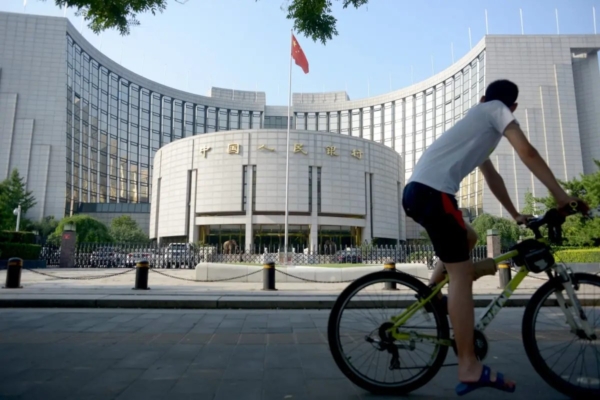China’s banking system is struggling to deal with bad loans, as high-risk assets continue to pose a challenge. Even though not classified as critical, these issues are causing significant pain to the overall economy.
The Chinese financial sector is facing serious challenges. For decades, Beijing has relied on state-owned banks to accelerate economic growth through lending. However, with banks now overwhelmed by high-risk assets, the situation is akin to a case of indigestion.
Official Chinese data indicates that bad loans in Chinese banks amount to 33 trillion yuan (RMB), with an additional 48 trillion yuan of problematic “special mention” loans, including credit extended to distressed real estate developers and cash-strapped local governments. Due to historical opacity and underreporting by Chinese authorities, the actual figures may be even worse than reported.
“Questioning Chinese data on bad loans is like asking a patient with indigestion how much junk food they have eaten,” as the report aptly puts it.
Unofficial sources paint an even bleaker picture of the Chinese economy. According to estimates by economic research firm Gavekal Dragonomics, bad loans in China’s real estate industry alone could exceed 7.1 trillion yuan at current exchange rates.
Reuters classifies bad assets in the Chinese banking sector into three categories. One type stems from local government financing platforms, such as bonds issued by local governments. IMF data shows that local government debt in China exceeded 60 trillion yuan in 2023. It is estimated that funding for local debt could account for 17% of total bank assets.
These debts, due to their political nature, leave banks with no choice but to roll them over before maturity, eroding their profitability. Rating agency Fitch estimates that 15% of local government debts need renegotiation, leading to a 6% decline in banking sector profits.
The second type of bad assets can be sold, auctioned, or securitized. Due to flawed bankruptcy procedures in China, banks faced with investment losses are more willing to offload toxic loans to state-supported investment vehicles, known as “asset management companies.”
For example, China Bohai Bank plans to sell assets worth 29 billion yuan at a 40% discount in 2024, representing a loss of over three-quarters of their 2023 income.
Asset management companies, often financially stretched themselves, act more as liquidators than investors. They frequently sell purchased loans to private equity funds, yielding double-digit returns.
The third type of bad loans involves banks attempting to recover outstanding amounts themselves, using provisions to cover any unrecovered loan losses. The total write-offs in 2023 amounted to 1.3 trillion yuan, based on Gavekal Dragonomics’ data.
Banks in China are scrambling to keep afloat through warehousing, selling, and writing off loans, a strategy that comes with its own set of costs. With subdued loan demand, lower interest rates, and Beijing’s directive for banks to inject cheap credit into strategic sectors, major banks’ profitability is under pressure.
According to data from Visible Alpha, the average net interest margin for China’s four largest banks and the fifth-largest, Bank of Communications, is expected to drop from over 2% in 2019 to 1.4% in 2024. Consequently, the average return on equity during the same period is projected to decrease from 10% to 8.6%.
As Chinese banks need to allocate capital to cover losses, shrinking profits will make it increasingly challenging to maintain the current pace of asset disposal, especially for rural commercial banks, accounting for 14% of China’s total bank assets.
Rural commercial banks are the least profitable segment in China’s banking system, while also having the highest non-performing loan ratio.
Lynette H. Ong, a China expert at the U.S. think tank Asia Policy Institute, highlighted in a report that the weakest link in China’s financial system is the 3,800 small and medium-sized regional banks scattered in rural areas. These banks rely solely on local deposits but are prohibited by Chinese banking regulations from establishing branches or offering online services to customers registered outside their province. As a result, they tend to collaborate with government-related projects, especially providing loans to real estate developers and projects, thus exposing themselves to the current real estate crisis.
For the past two decades, China has relied on investment-driven growth, distributing credit to both state-owned and private enterprises.
Reuters notes that this growth model is no longer sustainable, and risks continue to mount. If consumers don’t make up for the shortfall, the economy will slow down, leading to further increases in bad loans and potentially worsening financial indigestion.
Using historical data on GDP growth generated by loans, JPMorgan analysts assume that banks maintaining a 30% dividend payout ratio need over a 10% return on equity to generate enough capital to achieve the 5% economic expansion target set by the Chinese government.

